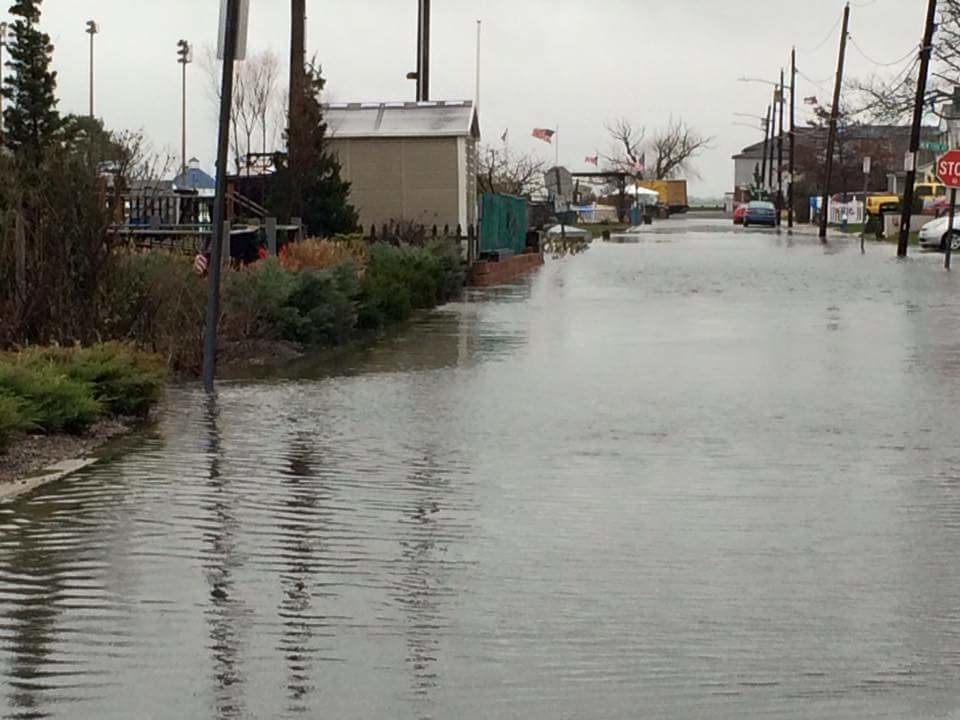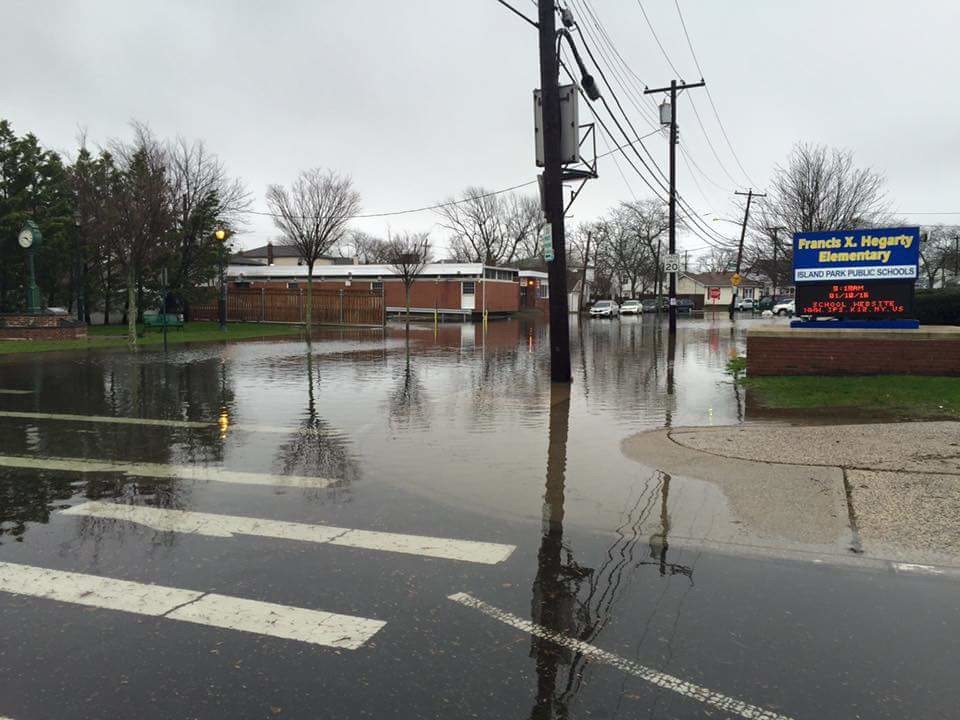I.P. drainage study begins
FEMA funds to overhaul sewer pipes and raise streets
Island Park residents awoke last Sunday to the sound of rain on their roofs and the sight of flooding in the streets. Even Pershing Place, which has a new bulkhead, was filled with water.
Mayor Michael McGinty said that a long-awaited drainage study has begun. “It means deciding what system the village will use not only during rain or snow, but the twice a day when you get high tides,” he said. “The village is cleaning all the drains; the county is flushing the sewers — all part of the system improvements.
“It’s all part of the $40 million grant we received from the Federal Emergency Management Agency’s Hazard Mitigation Grant Program,” McGinty added.
The village has received the first $1.8 million of the grant for a comprehensive engineering study of the village’s drainage system, municipal bulkheads and roadways in order to determine where drainage pipes need to be replaced or improved, where new bulkheads need to be built, and where chronically flooded roads need to be raised. U.S. Senators Charles Schumer and Kirsten Gillibrand and Rep. Kathleen Rice made the announcement on Sept. 1, calling it the first step to better protect Island Park from future storms.
“Almost three years after Sandy brought a massive storm surge that left Island Park completely underwater,” Rice said, “this first installment of federal funding will allow the village to start overhauling their storm drainage system so that residents and properties are better protected from extreme weather events in the future.”
McGinty said that village workers have discovered that the village has four-inch pipes in its drainage system, where it should have six-inch pipes, and the drainage boxes under the street grates have to be upgraded.
The village will use the recommendations from the study to implement an upgraded municipal storm-drainage system, which will include 42,000 feet of new storm sewers, tide gates, sub-surface storm water retention, three potential road elevations and 2,000 feet of upgraded bulkheading.
McGinty said that his office is on the phone with FEMA representatives at least twice a week, answering their questions and working to keep the project moving forward.

 66.0°,
Shallow Fog
66.0°,
Shallow Fog 











